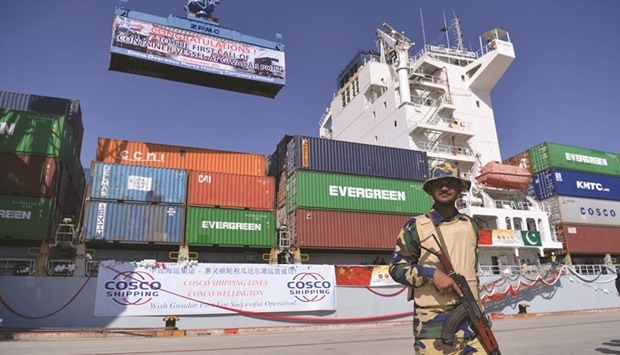Handed over to China Overseas Ports Holding Company Ltd on a 43-year lease in November 2015, the world’s largest deep sea port of Gwadar finally became functional for all commercial purposes this week, some 62 years after its potential was first noted in 1954, while the city was still a part of Oman.
Although Gwadar now features prominently among the 4,764 similar cargo handling facilities located in 196 countries around the world, this facility is surely a great addition to the 224-year-old history of containerisation around the planet.
Meaning “The door of the wind,” the 637-acre Gwadar Port has an immense geo-strategic importance as it is the entrance to the Arabian Gulf and is considered to be a substitute of Dubai Port.
History: On September 8, 1958, Pakistan purchased the small and underdeveloped fishing village of Gwadar from Oman for Rs5.5bn (equivalent to US$1.1bn in 2015). While Sultan Mohamed Shah, the then reigning Aga Khan, dished out the largest contribution for the cause, the remainder was paid through tax revenue.
The Agreement had two important clauses: (1) Balochistan would form a military recruitment source for Oman; as a result Balochis constitute a major part of Omani forces, and (2) the resources of Gwadar would be further developed.
The Pakistani government had integrated Gwadar into Balochistan province on July 1, 1977 as the district headquarters of the newly-formed Gwadar District.
In 1993, the Government of Pakistan had formally conceived the plan to develop Gwadar into a major port city with a deep-sea port and to connect it with Pakistan’s highway and rail networks.
On March 22, 2002, the Government of Pakistan began construction of Gwadar and Phase I of this project was completed in March 2007.
Inauguration: Gwadar Port was inaugurated on March 20, 2007 by the then President General Pervez Musharraf, who was escorted by Prime Minister Shaukat Aziz, Balochistan’s Governor Owais Ahmed Ghani and the then Chinese Minister of Communications, Li Shenglin.
By March 2007, China had provided 80 per cent of Gwadar Port’s $248mn initial development costs.
General Musharraf had announced Rs50mn for rural areas of the Gwadar district and had maintained that the Federal government would provide Rs10mn for sewerage,
education and health facilities in the new port city.
More recent developments pertaining to Gwadar: In 2015, it was announced that the city and port would be further developed under CPEC at a cost of $1.62bn, with the aim of linking northern Pakistan and western China to the deep water seaport.
The port will also be the site of a floating Liquefied Natural Gas facility that will be built as part of the larger $2.5bn Gwadar-Nawabshah segment of the Iran-Pakistan gas pipeline.
Construction in this regard began in June 2016 on the Gwadar Special Economic Zone, which is being built on 2,292 acre site adjacent to the port.
Share of liner ships in global trade and he history of containerisation: According to the World Shipping Council, there are approximately 400 liner services, most sailing weekly, in operation today.
Liner vessels, primarily in the form of container ships and roll-on/roll-off ships, carry about 60% of the goods by value moved internationally by sea each year.
Liner ships transport about 60% of the value of seaborne trade or more than US $4tn worth of goods annually.

A Pakistani Naval personnel stands guard beside a ship carrying containers during the opening of a trade project in Gwadar port, some 700km west of Karachi on Sunday. Pakistan’s Prime Minister Nawaz Sharif on Sunday opened a trade route linking the southwestern post of Gwadar to the Chinese city of Kashgar as part of a joint multi-billion-dollar project to jumpstart economic growth in the South Asian country.


